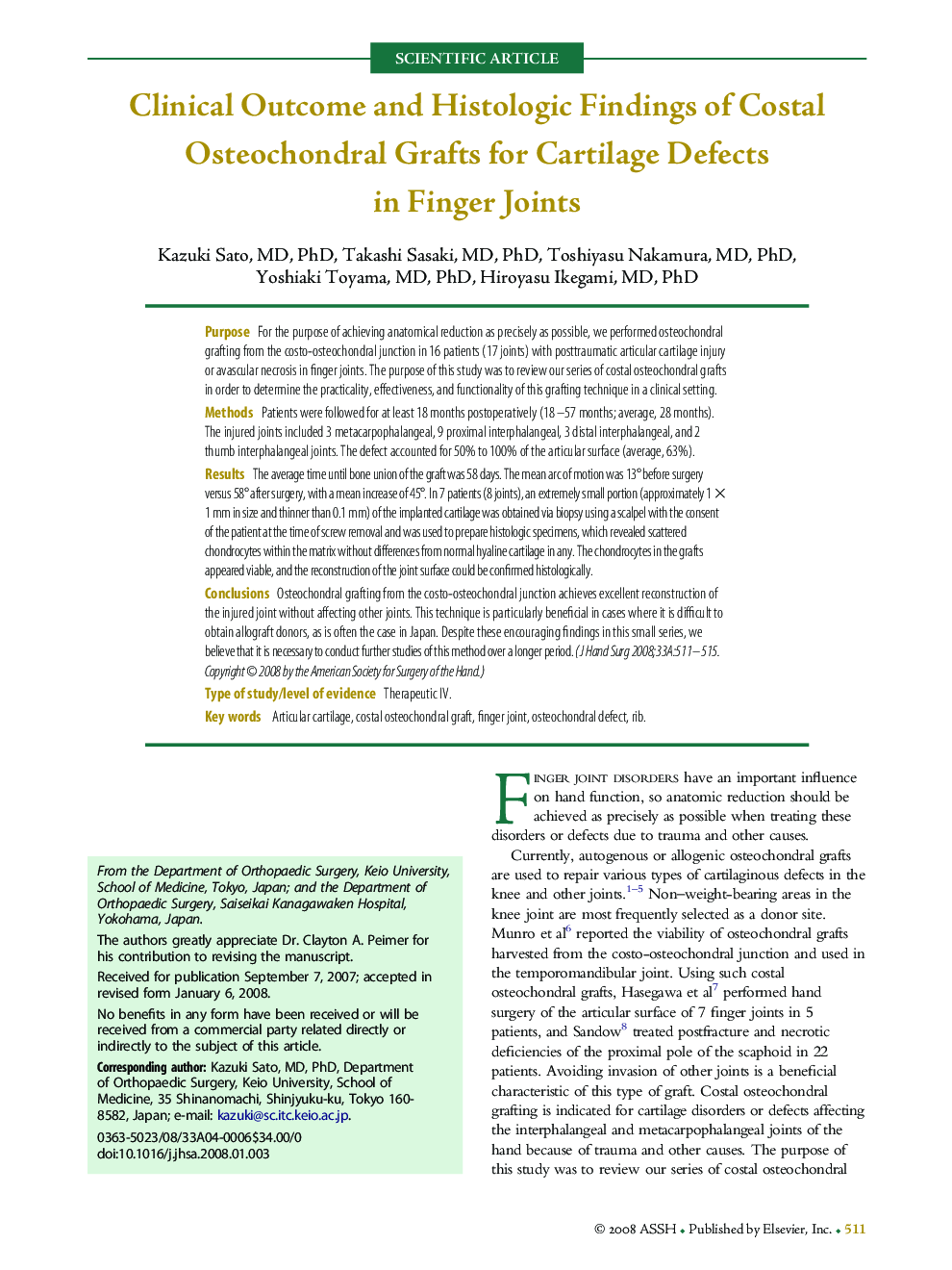| کد مقاله | کد نشریه | سال انتشار | مقاله انگلیسی | نسخه تمام متن |
|---|---|---|---|---|
| 4068689 | 1604444 | 2008 | 5 صفحه PDF | دانلود رایگان |

PurposeFor the purpose of achieving anatomical reduction as precisely as possible, we performed osteochondral grafting from the costo-osteochondral junction in 16 patients (17 joints) with posttraumatic articular cartilage injury or avascular necrosis in finger joints. The purpose of this study was to review our series of costal osteochondral grafts in order to determine the practicality, effectiveness, and functionality of this grafting technique in a clinical setting.MethodsPatients were followed for at least 18 months postoperatively (18–57 months; average, 28 months). The injured joints included 3 metacarpophalangeal, 9 proximal interphalangeal, 3 distal interphalangeal, and 2 thumb interphalangeal joints. The defect accounted for 50% to 100% of the articular surface (average, 63%).ResultsThe average time until bone union of the graft was 58 days. The mean arc of motion was 13° before surgery versus 58° after surgery, with a mean increase of 45°. In 7 patients (8 joints), an extremely small portion (approximately 1 × 1 mm in size and thinner than 0.1 mm) of the implanted cartilage was obtained via biopsy using a scalpel with the consent of the patient at the time of screw removal and was used to prepare histologic specimens, which revealed scattered chondrocytes within the matrix without differences from normal hyaline cartilage in any. The chondrocytes in the grafts appeared viable, and the reconstruction of the joint surface could be confirmed histologically.ConclusionsOsteochondral grafting from the costo-osteochondral junction achieves excellent reconstruction of the injured joint without affecting other joints. This technique is particularly beneficial in cases where it is difficult to obtain allograft donors, as is often the case in Japan. Despite these encouraging findings in this small series, we believe that it is necessary to conduct further studies of this method over a longer period.Type of study/level of evidenceTherapeutic IV.
Journal: The Journal of Hand Surgery - Volume 33, Issue 4, April 2008, Pages 511–515